- Home
- Daniel Defoe
A Journal of the Plague Year Page 3
A Journal of the Plague Year Read online
Page 3
The effect is to accentuate the reader’s engagement with the mission of survival, but on Defoe’s ideological terms. If H.F. is no rounded character he is an urban Everyman, staring death in the face and getting home safely; his chief characteristic is neither reckless curiosity nor historical pedantry, but rock-solid bourgeois sobriety. He is disdainful of the court, respectful towards the mayor, horrified by the feckless poor, unimpressed by public drinking, mindful of the Bible, and Defoe expects us to admire him for it. If the Journal is a kind of practical manual for avoiding the plague, it is also a conduct book that sets out how to live this day when tomorrow might be your last. However, while H.F. keeps a low profile in order to serve history, he cannot escape history’s brute fact: his subject is dominated for each of its participants by the challenge of survival. The Journal ends on a more starkly personal note than any other work by Defoe: ‘yet I alive!’ It tells of those, including H.F. himself, who abandon public office to save themselves; the work as a whole charts the same course, starting out by suppressing the first person and ending with an assertion of its miraculous survival. So, if the Journal ‘hovers between romance and history’, it is partly because plague flattens out the basic ingredient of the emerging novel form, the autonomous self, and in defence of a piety with which all readers can thereby identify. Before H.F. ends with the ‘coarse but sincere Stanza’ that celebrates his own survival, he reminds readers of what it meant to survive in the wrong way. The ‘Generality of the People’ were ungrateful: ‘they sang his Praise, but they soon forgot his Works’. God had delivered them ‘from the Host of Pharaoh’ and let them see ‘the Egyptians overwhelmed in the Water’ (p. 212).
But it is an alarming call to piety that treats the dead as conquered enemies, and just as Robinson Crusoe imagines a world without society, so the Journal tests the strength of social bonds in extreme circumstances. Plague attacked not just the constitution but the conscience. Even H.F. bribes his way out of his responsibilities as a parish examiner, while others turn to violence to save themselves. To almost everyone, however, H.F. extends compassion. Not always coherently, he tries to draw a line between plague behaviour and general human nature, his inner life called into being through judging others. Just occasionally, he gives up trying to draw that line. When the houses of the dead are looted, when gravediggers rob corpses of their linen, when nurses smother their patients in fear for themselves, when people are confined to their houses ‘maliciously’, when—worst of all—victims go out of their way to try and infect passers-by, he contemplates a world of irredeemable depravity. The sceptical historian in him may come to the rescue, as it did among reports from Marseilles. Murderous nurses always seem to operate on the opposite side of town and they are in any case not ‘so common … as some have since been pleas’d to say’ (p. 72). Deliberate infection is a fiction rife among country people afraid of giving help to fleeing citizens, the fruit of ignorance about a disease one could have without knowing it. But it is, H.F. admits, impossible to ‘come at all the particulars’ of every horror story, so however hard he tries he cannot entirely obliterate the stain on human nature.
Philosophy and Society
This is to give Defoe credit for a level of philosophical engagement often thought to be beyond a writer so pedantically empirical; in fact he had skirted the nature of evil in the exchanges between Crusoe and Friday, and would return to the subject later in 1722, with Colonel Jack. The topic was in the air as much as the Marseilles plague, for the decade preceding the Journal had seen the publication of two cornerstones of early English enlightenment writing: Shaftesbury’s Characteristics (revised in 1714) and Mandeville’s Fable of the Bees (1714, reissued in 1723). Shaftesbury had argued that since man is inherently sociable, there is no fundamental distinction between private and public good. Feelings of pity, compassion, and friendship gave pleasure to those who share them, and our categories of the ‘evil’ or ‘unnatural’ merely reflect deficiencies in our thinking; we should always refer to natural feelings in seeking to explain why crimes are committed. Accordingly, Shaftesbury rejects the idea of religion based on rewards and punishments. Mandeville set out to puncture such optimism, describing a world in which general welfare is made possible by individual greed, where public good is merely the sum of private vice.
In some respects Defoe’s instincts inclined him towards Shaftesbury but in the extreme conditions of the plague year the sayings of natural philosophy are apt to sound shallow and complacent. Faced with reports of victims deliberately passing on the disease, H.F. can only throw up his hands: ‘What natural Reason could be given, for so wicked a Thing, at a Time, when they might conclude themselves just going to appear at the Barr of Divine Justice, I know not: I am very well satisfy’d, that it cannot be reconcil’d to Religion and Principle, any more than it can be to Generosity and Humanity’ (p. 48). The space vacated by reason, religion, principle, generosity, and humanity can only be occupied by ‘so wicked a Thing’, and as with the plague itself—‘the thing [that] began to show itself’—the monstrous evil it releases defies description, reduces language to emotive flailing. Attempting to sum up the horrors of 10 September 1665, when the plague was at its height, the best H.F. can do is assert that ‘it is impossible to say any Thing that is able to give a true Idea of it to those who did not see it, other than this; that it was indeed very, very, very dreadful, and such as no Tongue can express’ (p. 53). If the Journal is a boundary text in the sense that it occupies the fringes of known genres, it also charts boundaries when attempting to speak of what lies beyond its moral pale, beyond its ability to speak at all. Its category of the unspeakable has the new discourse of natural philosophy shaking hands with the old iconography of apocalypse: plague induces ‘so wicked a Thing’ that cannot be squared with natural reason and it shows itself in ‘Tokens’, in the mark of the beast (Revelation 13: 17).
Throughout the Journal, however, Defoe goes out of his way to raise iconographic expectations only to modify them, and vice versa; he was too particular a writer to be carried away by the mythologies he created, too convinced a Nonconformist to do God’s job for Him. When H.F. visits the ‘terrible Pit’ in Aldgate, there are worldly causes for the apocalyptic sight: ‘Coffins were not to be had’ (p. 55). Blaspheming men in the Pye Tavern become infected and are ‘every one of them carried into the great Pit, which I have mentioned above, before it was quite fill’d up’ (p. 58). Frank H. Ellis lists the relative clause there among an ‘annoying’ and ‘nameless class of repetition-indicators’,10 but Defoe uses it to defer to divine judgement by cautioning us not to conclude that the pit stands for the men’s damnation. Typically, however, he has it both ways: the allusion in ‘quite fill’d up’ to the ultimate sealing of the gates of hell reassures readers that there, in all probability, is where the blasphemers will end up.
The same particularity prevents the Journal from hardening into satire, for all its grisly puns and jokes, its inverted vision of the everyday: ‘The Inns-of-Court were all shut up … Every Body was at peace, there was no Occasion for Lawyers’ (p. 16); ‘Abundance of Quacks too died, who had the Folly to trust to their own Medicines’ (p. 32); looking for a word to describe the increase in the number of ‘Feaver’ victims, Defoe comes up with—of all things—‘swell’ (p. 7). Even the names of streets—Bell Alley, Token House Yard—reverberate to the vocabulary of plague. H.F.’s favourite topic, the forcible shutting-up of houses, turns the Englishman’s home from castle to lethal penitentiary, and it is the Dutch who are the true Englishmen, fortifying their homes against intruders (p. 49). As well as mapping the city, H.F. listens to it: here, however, the cries of London are not those of salesmen hawking wares, but plague victims screaming for release from their pain. The idea of circulation becomes contaminated. Rumour is a kind of plague, concealed, passed on, and then breaking out everywhere. The tenderest act in nature, a mother feeding a baby, turns deadly. Communication itself is like a disease which people walk down the middle of the str
eet to avoid; in Due Preparations, Defoe had explained how to sterilize letters by smoking them in brimstone, then sprinkling them with vinegar. If Swift’s Gulliver’s Travels was an ironic tribute to the success of Robinson Crusoe, it also nods towards the Journal when its hero comes home unable to bear the stench of humanity; some of Defoe’s Londoners take to the streets only with nosegays to hand. Best of all for this great writer about commerce, cash becomes carrier, requiring sterilization by vinegar. Defoe was fond of taking the longer view of currency: Crusoe had reflected on the pointlessness of his coins; Colonel Jack’s would weigh him down like guilt as he fashioned another escape.
H.F.’s reactions to the prevailing horror suggest that Defoe wanted to keep his readers’ sensibilities fresh: where others are ‘hardened’, as incapable of pity as they are of sensing personal danger, the narrator is constantly ‘surprized’, ‘curious’, and ‘tender’. He expects the terrors to make the stoutest heart bleed and is shocked when they have the opposite effect. His role as a model citizen, fostering social thinking through right feeling, is nowhere more evident than in his meeting with the virtuous, impoverished waterman. Resolving to find out about the people who fled to moored ships, he meets a boatman who supports his plague-ridden family by rowing provisions across the Thames. Had he not abandoned them, asks the narrator? Lifting his eyes to heaven, the boatman gives thanks for having been preserved so that he can fend for them, prompting H.F. to the reaction of sentimental heroes throughout the eighteenth century. With two inseparable gestures, he sheds tears and digs into his pocket: ‘As I could not refrain contributing Tears to this Man’s Story, so neither could I refrain my Charity for his Assistance’ (p. 95). The boatman reciprocates with tears of his own and more thanks to the almighty. If H.F. is always ready to remind his audience that ‘the Cries of the poor were most lamentable to hear’ (p. 83) and that their sufferings were alleviated by charity, the episode of the boatman also shows that he expected them to deserve their handouts through piety and industry, not through the ‘brutal Courage’ that made them, like the inhabitants of Marseilles, ‘range the infected Streets’.
If that distinction tars the desperate poor with a brush that has touched H.F. himself, it epitomizes the contradictions of A Journal of the Plague Year, a book that brilliantly creates the illusion of an individual perspective on a world running out of control. Reportage may, as John Carey says, leave readers with the feeling of having been there and got out, and the great work of imaginary reporting that is the Journal certainly charts the exhilaration of survival and the comforts of justification. But such journeys are no more comfortable now than they could have been to Londoners in 1722, fearful of what might be nestling in a bale of fabric fresh from the Mediterranean. Then or now, only the most unfeeling reader of Defoe’s uniquely unsettling landscape could fail to wonder what it would mean to be not the pious man who walks amid the shadows and emerges thankful, but the nameless woman whose part it is merely to throw open a window, utter ‘three frightful Skreetches’, and then cry ‘in a most inimitable Tone’, ‘Oh! Death, Death, Death!’ (p. 70).
NOTE ON THE TEXT
A Journal of the Plague Year was first published in 1722, the only edition to appear during Defoe’s life. A second edition appeared in 1755. The present text is that of 1722, printed from a xerox reproduction of the Huntington Library copy, through the kindness of Mr James Thorpe, Director of the Huntington Library. The long ‘s’ of the first edition has been eliminated, and I have silently corrected obvious errors of the press. In a very few instances where the text of the first edition is unintelligible, the result of an omitted word, I have supplied an obvious reading in square brackets. I have occasionally reduced the excessive punctuation of the original to avoid confusion. Aldgate, or Algate, the parish inhabited by Defoe and by the narrator of the Journal, I have printed consistently as Aldgate.
L. L.
SELECT BIBLIOGRAPHY
Editions
The first edition of A Journal of the Plague Year was published in 1722 and the second in 1755. E. W. Brayley’s 1835 edition was an uncorrected version of the 1722 text and was reprinted many times in the nineteenth century. G. S. Aitken’s 16-volume Romances and Narratives of Daniel Defoe (1894, repr. 1974) includes corrected texts of the Journal and Due Preparations for the Plague and was the basis for the first Everyman Journal of 1908, since replaced by John Man’s New Everyman edition of 1995. Anthony Burgess and Christopher Bristow prepared a modernized text for Penguin in 1966. Louis Landa’s Oxford English Novels edition appeared in 1969 and was reissued with new editorial material by David Roberts in 1990. There are three other modern scholarly editions: Paula R. Backscheider’s 1992 Norton edition, which includes a wide range of useful secondary and contextual material; Cynthia Wall’s 2003 Penguin text, which reprints Burgess’s 1966 introduction as an appendix; and John Mullan’s 2009 edition for the Pickering & Chatto series of Defoe’s major works, under the general editorship of W. R. Owens and P. N. Furbank.
Biography and Bibliography
The most recommendable general studies of Defoe’s life and work are John J. Richetti, The Life of Daniel Defoe (Oxford, 2005), Maximilian E. Novak, Defoe: Master of Fictions (Oxford, 2001), and P. N. Furbank and W. R. Owens, A Political Biography of Daniel Defoe (London, 2006). Paula R. Backscheider’s Daniel Defoe: His Life (Baltimore, 1989) locates numerous sources not referred to in previous biographies such as John Robert Moore’s Daniel Defoe: Citizen of the Modern World (Bloomington, 1958) and James Sutherland’s still useful Defoe (2nd edn., London, 1950). Defoe’s whereabouts during the Great Plague are discussed in F. Bastian, Defoe’s Early Life (London, 1981), 18–31, and his ‘James Foe, Father of Daniel Defoe’, Notes and Queries, 209 (1964), 83.
P. R. Furbank and W. R. Owens, A Critical Bibliography of Daniel Defoe (London, 1998), and Furbank, The Canonisation of Daniel Defoe (London, 1988) and Defoe’s De-attributions (London, 1994) continue modern debate about the canon of Defoe’s work begun in John Robert Moore, A Checklist of the Writings of Daniel Defoe (2nd edn., Bloomington, 1971). Defoe’s other writings on plague may be found in his Review (1709), nos. 86 (22 Oct.), 87 (25 Oct.), 88 (27 Oct.), 89 (29 Oct.), 91 (3 Nov.), 105 (6 Dec.), and (1712), nos. 7 (23 Aug.), 8 (26 Aug.), and 11 (6 Sept.); items attributed to him from Applebee’s Journal, Mist’s Journal, and the Daily Post are reprinted in William Lee, Daniel Defoe: His Life and Recently Discovered Writings (1869), ii. 265, 277, 281, 284, 291, 294, 296, 378, 399, and 407. Those from Applebee’s Journal also appear in Michael F. Shugrue (ed.), Selected Poetry and Prose of Daniel Defoe (New York, 1968).
Critical Studies with Chapters or Sections on
A Journal of the Plague Year
The Journal’s changing reputation may be traced in Pat Rogers (ed.), Defoe: The Critical Heritage (London, 1972). The introductions to the editions by Burgess, Landa (reprinted in Backscheider’s edition), Wall, and Mullan are recommended, as are the following studies:
Alkon, Paul K., Defoe and Fictional Time (Athens, Ga., 1979).
Backscheider, Paula R., Daniel Defoe: Ambition and Invention (Lexington, Ky., 1986).
Bender, John, Imagining the Penitentiary (Chicago, 1987).
Boardman, Michael M., Defoe and the Uses of Narrative (New Brunswick, 1983).
Conrad, Peter, The Everyman History of English Literature (London, 1985).
Foley, Barbara, Telling the Truth (Ithaca, NY, 1986).
Flynn, Carol Houlihan, The Body in Swift and Defoe (Cambridge, 1990).
Gregg, Stephen, Defoe and Manliness (Aldershot, 2009).
Hunter, J. Paul, Before Novels (New York, 1990).
—— The Reluctant Pilgrim (Baltimore, 1966).
Leavy, Barbara Fass, To Blight with Plague (New York, 1992).
Mayer, Robert, History and the Early English Novel: Matters of Fact from Bacon to Defoe (Cambridge, 1997).
Novak, Maximilian E., Economics and the Fiction of Daniel Defoe (Berkeley and Los Angeles, 1962).
—— Realism, Myth and History in Defoe’s Fiction (Lincoln, Nebr. 1983).
Richetti, John J., Defoe’s Narratives (Oxford, 1975).
Rogers, Pat, Eighteenth Century Encounters (Brighton, 1985).
Sherman, Sandra, Finance and Fictionality in the Early Eighteenth Century (Cambridge, 2005).
Starr, George A., Defoe and Spiritual Autobiography (Princeton, 1965).
—— Defoe and Casuistry (Oxford, 1971).
Wall, Cynthia, The Literary and Cultural Spaces of Restoration London (Cambridge, 1998).
Zimmerman, Everett, Defoe and the Novel (Berkeley and Los Angeles, 1975).
—— Boundaries of Fiction (Ithaca, NY, 1996).
Critical Articles on A Journal of the Plague Year
Bastian, Frank H., ‘Defoe’s Journal of the Plague Year Reconsidered’, Review of English Studies, 16 (1965), 151–73.
Juegel, Scott, ‘Writing Decomposition: Defoe and the Corpse’, Journal of Narrative Technique, 25 (1995), 139–53.

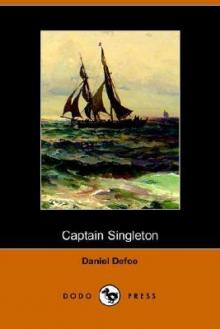 Captain Singleton
Captain Singleton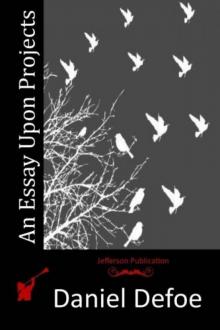 An Essay Upon Projects
An Essay Upon Projects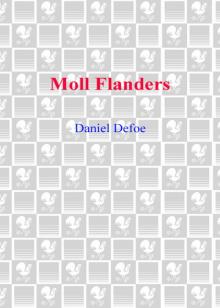 Moll Flanders Moll Flanders Moll Flanders
Moll Flanders Moll Flanders Moll Flanders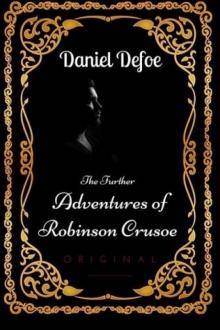 The Further Adventures of Robinson Crusoe
The Further Adventures of Robinson Crusoe Everybody's Business Is Nobody's Business
Everybody's Business Is Nobody's Business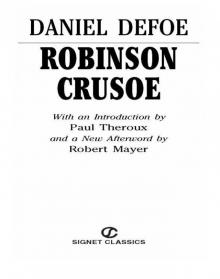 Robinson Crusoe
Robinson Crusoe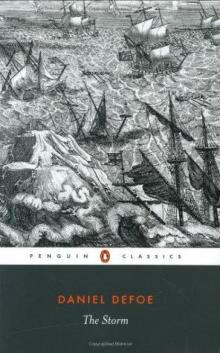 The Storm
The Storm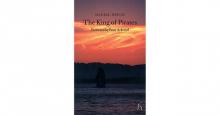 The King of Pirates
The King of Pirates History of the Plague in London
History of the Plague in London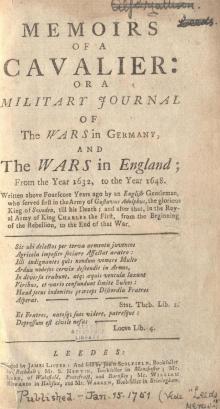 Memoirs of a Cavalier
Memoirs of a Cavalier_preview.jpg) The Life and Most Surprising Adventures of Robinson Crusoe, of York, Mariner (1801)
The Life and Most Surprising Adventures of Robinson Crusoe, of York, Mariner (1801) A Journal of the Plague Year
A Journal of the Plague Year_preview.jpg) The Life and Adventures of Robinson Crusoe (1808)
The Life and Adventures of Robinson Crusoe (1808)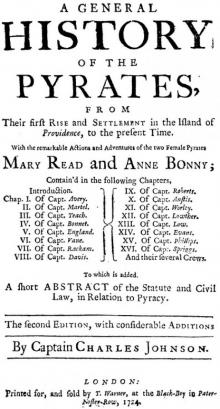 A General History of the Pyrates: / from their first rise and settlement in the island of Providence, to the present time
A General History of the Pyrates: / from their first rise and settlement in the island of Providence, to the present time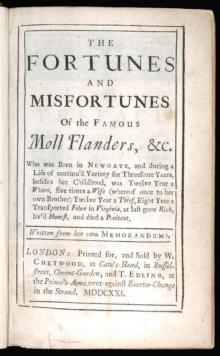 The Fortunes and Misfortunes of the Famous Moll Flanders
The Fortunes and Misfortunes of the Famous Moll Flanders_preview.jpg) The Fortunate Mistress (Parts 1 and 2)
The Fortunate Mistress (Parts 1 and 2)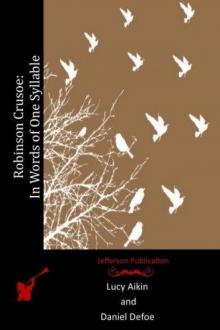 Robinson Crusoe — in Words of One Syllable
Robinson Crusoe — in Words of One Syllable From London to Land's End
From London to Land's End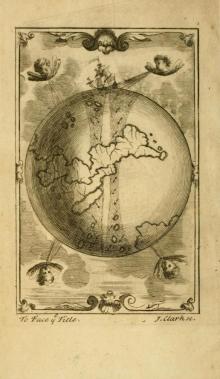 A New Voyage Round the World by a Course Never Sailed Before
A New Voyage Round the World by a Course Never Sailed Before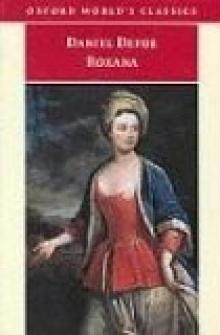 Roxana
Roxana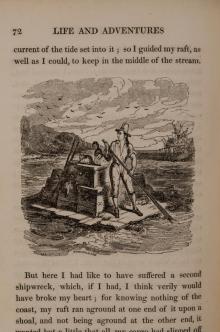 The Life and Adventures of Robinson Crusoe of York, Mariner, Volume 1
The Life and Adventures of Robinson Crusoe of York, Mariner, Volume 1_preview.jpg) Memoirs of Major Alexander Ramkins (1718)
Memoirs of Major Alexander Ramkins (1718) Dickory Cronke
Dickory Cronke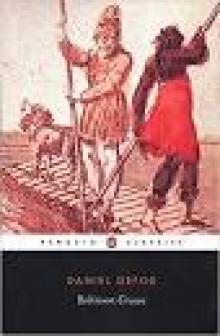 Robinson Crusoe (Penguin ed.)
Robinson Crusoe (Penguin ed.)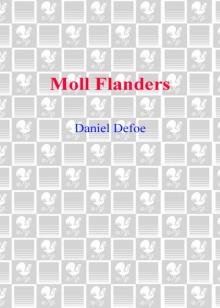 Moll Flanders
Moll Flanders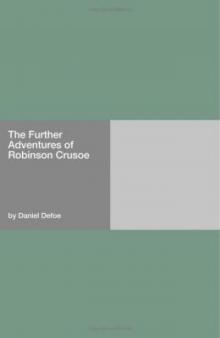 The Further Adventures of Robinson Crusoe rc-2
The Further Adventures of Robinson Crusoe rc-2